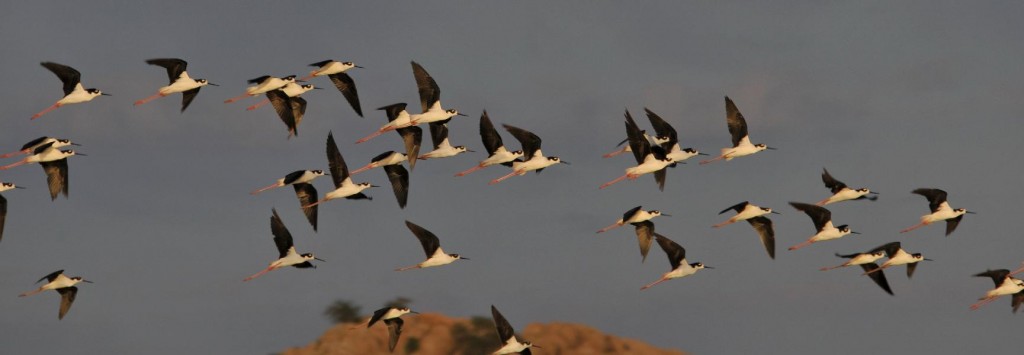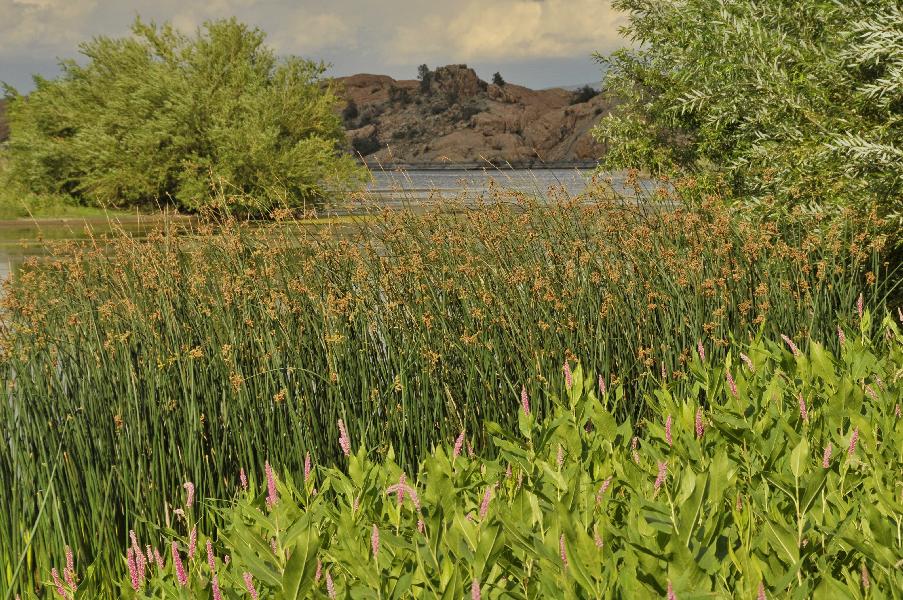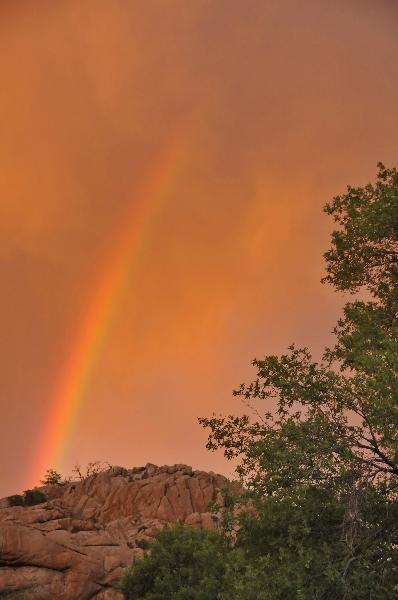Another summer has slipped over its equinoctial belt—its pride hath gone before the fall. And so it is for me, veteran of many celestial cycles. Basted over the coals of another Arizona summer, I am, at the very least, well-seasoned by now.
The monsoons ramped up a bit in recent weeks, spitting fire and rain in a last sputter of glory, then left overnight, replaced by clear skies and cooler nights, the crickets slowing their cadence in response. The Canada Geese fly by at dawn, signaling their passage with a chorus of discordant honks that brings me so many memories of autumns past. Singing as if they never left, the White-crowned Sparrows have reappeared, young ones with them—young birds eager for the sunflower seeds they find here on the ground, as if expecting them.
Nearby Willow Lake is filling up with birds, some on passage, others ready to try the lake on for size for the winter. A week or so ago, young Micah Riegner and I converged on Willow Lake; the pull of birds in passage was irresistible for both of us, and we were not disappointed. In an hour or so of observation, our list stood at 56 species, and the numbers of some surprised us: 240 Northern Shovelers, 48 Pied-billed Grebes, 352 White-faced Ibises, 30 American Avocets, 34 Northern Phalaropes. A week before, avocets were rare, and dapper stilts waded in orderly ranks, then flew in tight squadrons when a dark missile appeared in the sky—a Peregrine.
The productivity of this lake is impressive, though that same productivity, especially the lush growth of aquatic plants, is less endearing to those humans who would paddle or sail on the lake (the birds paddle and sail just fine).
We need to be honest with ourselves, however; Willow Lake is misnamed. Oh, the willow part is accurate enough; in fact, they are exploding in the shallows where Willow Creek enters from the west. But this body of water is not really a lake—it’s a reservoir at best, and as is true for most impoundments in this state, it aspires to be a marsh.
A marsh is often recognized by its emergent properties—in this case, cattails, bulrush, water smartweed, and spikerush. Ask the Yellow-headed Blackbird, the Common Yellowthroat, the Song Sparrow, and the Marsh Wren—they all know it’s a marsh. Wade in the shallows, stirring up the thick black anoxic mud, and the sulfurous stench will tell you it’s a marsh.
Nearby Watson Lake, a sister reservoir that shares aquatic birds with Willow, is classified by the Environmental Protection Agency as “impaired.” Tell that to the dozens of cormorants that commute between the lakes, the Bald Eagles and Peregrine Falcons that hunt here in the cooler months, the thousands of other waterfowl that help the lakes live up to their official designation as an Important Bird Area. Yes, there are concerns for human recreation, and the City of Prescott will have to face them. They may even listen to some of my strong opinions on the matter. But impairment is clearly in the eyes of the beholder, and in my eyes, these lakes are stunningly productive. There is nothing like them for hundreds of miles, and the birds find them.
So autumn at the lakes does not conform to the calendar. Birds arrive and depart according to their own needs, and it is our duty as naturalists to bear witness. Their messages just need our attention. In fact, if we are diligent in collecting data, we may be able to learn much about seasonal progression, the pace of climate change, the quality of our local environment, maybe even the color of our own spirits. Watching the birds of autumn is a sure cure for the blues.
The goldenrods and camphorweeds are blooming. Evening brings the sweet, lush scent of brickellbush, a magnet to drab little moths drawn to the timed release of chemical ambrosia. Wikipedia, that grassroots compendium of all things great and small, says that ambrosia in Homeric tradition was “a kind of divine exhalation of the Earth.” To me, that brief evening fragrance does indeed approach the divine.
The genus Ambrosia in the form of ragweed is also in bloom, and my head throbs in protest as the fine pollen penetrates my senses and triggers a histamine response. That’s the down side of the arrival of autumn for me.
You would think that breeding season is over; there is no need to strut, preen, or demonstrate your manliness through song or physical display. But as for so many things in autumn, expectations and assumptions are often just set up to fall. The thrashers and wrens are active again, and the night is filled with the deep hoots of Great Horned Owls and the eerie screeches of Barn Owls. Two rabbits came by this morning, one intently following the cotton tail of the other—perhaps more ambrosia at work. Many creatures seem to feel the stirrings of excitement that infect so many of us at this change of season.
For a few days I missed the appearance of monsoonal fleets of clouds, the sky having lost its dramatic character, and then, today, the armada was back, clouds trailing ragged sea-anchors of virga as they sailed across the heavens. It was impossible to stay inside and work on editing student papers with this kind of weather, so Joanne and I dropped everything and started out toward the Peavine Trail that dissects Granite Dells. As soon as we stepped outside, pellets of rain surrounded us, but fortunately, this is Arizona, where “it’s a dry rain.”
As sunset approached, a brilliant fragment of rainbow emerged from the glowing red mists, taking our breaths away. I rotated slowly, as the sky was brilliant in all directions. Then the colors began to fade, as night took its rightful place on the stage, and I started for home, my socks filled with horehound seeds, another proof of the changing of the seasons.




